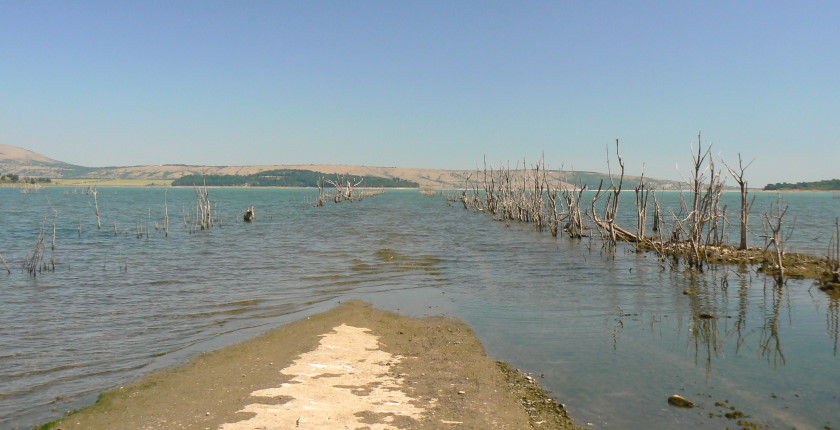
Photo: Vassia Atanassova - Spiritia / https://creativecommons.org/licenses/by-sa/3.0/legalcode
German company Profine Energy plans to build a massive floating solar power plant on the Ogosta artificial lake in Bulgaria. The firm has just registered a subsidiary in Bulgaria.
Protests held last month apparently didn’t unsettle German-based Profine Energy in its intention to install a floating photovoltaic facility on the Ogosta reservoir in in Montana in northwestern Bulgaria. Fishermen, environmentalists and concerned citizens are opposing the proposition for a 500 MW to 1.5 GW facility as they fear it would harm the ecosystem and deprive them of their livelihoods.
After pledging in November to invest more than EUR 1 billion in the country, the company has registered a subsidiary on January 18. It holds 75.1% of Profine Energy Bulgaria and the remainder is controlled by its domestic partner Enevlo.
Authorities said in December that the investor would be tasked with repairing the dam, which is in a bad shape and needs an urgent makeover. The works are valued at EUR 10.2 million. The structure includes hydropower plants Kosharnik and Ogosta. Ogosta is also the largest river in the area and a tributary of the Danube.
Project is not transparent
According to initial information, the floating solar power plant would cover 40% of the artificial lake. Residents and birdwatchers and other activists are accusing Profine Energy of a lack of transparency with regard to the project. Protestors vowed to organize rallies across Bulgaria if their demands are not heard.
A public call is planned for the selection of a company for the project
The Ministry of Economy has claimed so far there was only an expression of interest in such an investment and that the possible launch of the project depends on government institutions that would consider all its aspects. A tender for the endeavor is supposedly planned as well to enable other companies to compete.
Pros, cons regarding floatovoltaics
Reservoirs at hydroelectric systems are especially suitable for floating photovoltaics, popularly called floatovoltaics, as they are already connected to the transmission network. Another advantage is that such facilities can be installed without property ownership issues. Moreover, water cools the panels, and in turn they reduce evaporation.
Shading from floating panels may boost harmful algae and hurt aquatic life
On the other hand, there are indications that the lack of sunshine leads to an increase in toxic algae and reduces the amount of deepwater oxygen, affecting flora and fauna and carbon dynamics, implying that the covered surface needs to be limited.
Some studies have pointed to risks of contamination from the materials in the photovoltaic panels and the impact of the electromagnetic field around the cables. As boats are used for construction and maintenance, chemical spills are possible.
New technology draws interest throughout Balkans
As for the rest of the region tracked by Balkan Green Energy News, Norwegian green energy company Statkraft has installed the first floating solar power plant in Albania on the reservoir of its Banja hydropower plant and more projects are under development in the country. EPCG in neighboring Montenegro is preparing to build solar power plants at the dams at its Perućica hydropower plant and a floating photovoltaic system on the lake.
There is great interest in the technology in Greece, Serbia, and Romania, too.
Of note, Eurohold is building what is set to become Bulgaria’s largest power plant. The location for the facility with a peak capacity of 124 MW is south of Sofia.


















Be the first one to comment on this article.